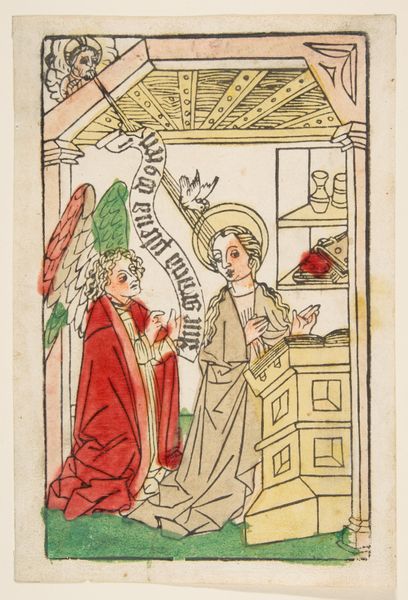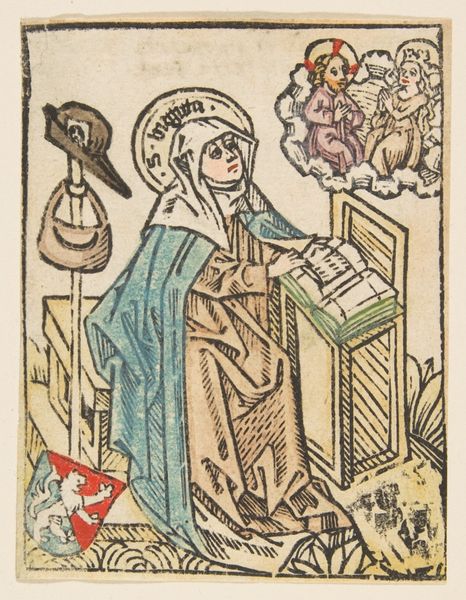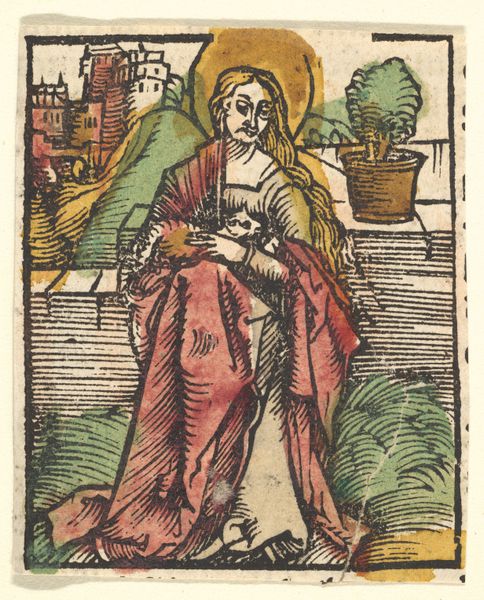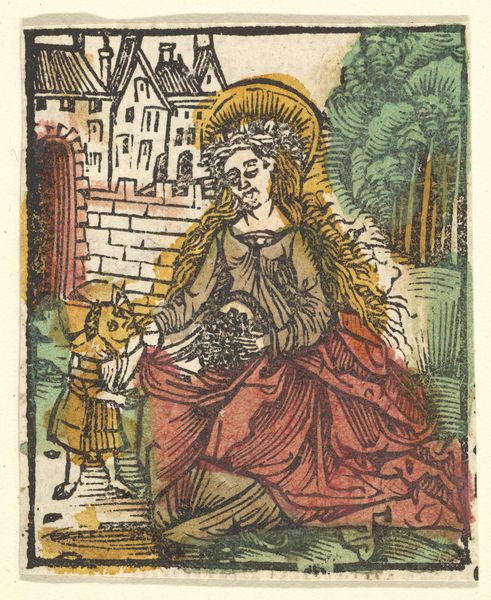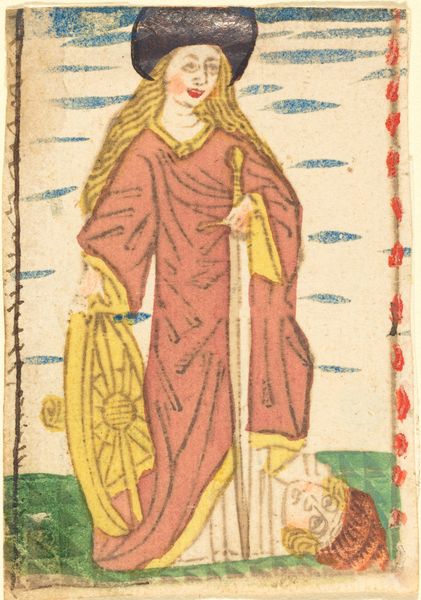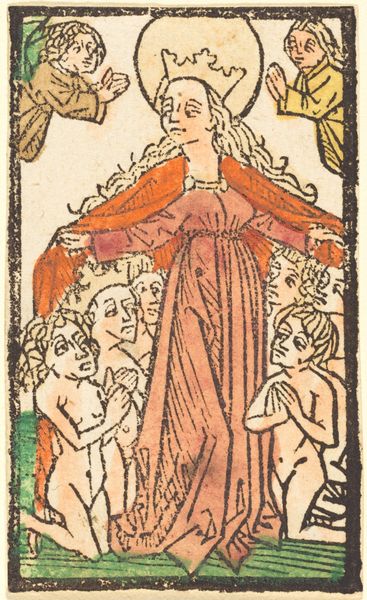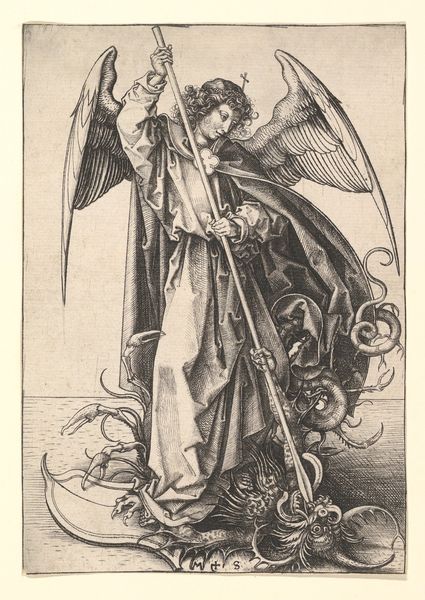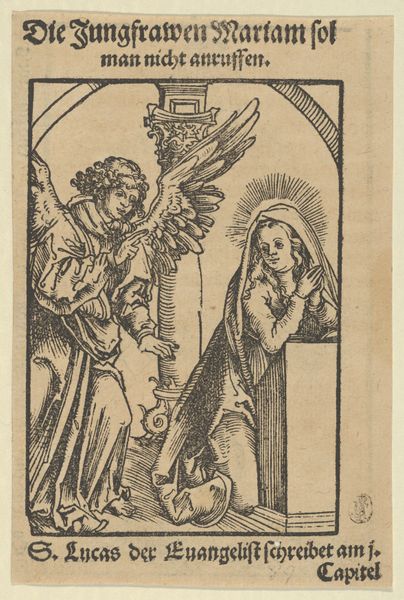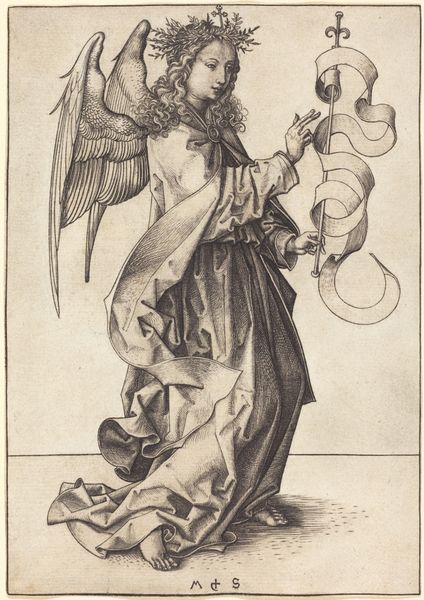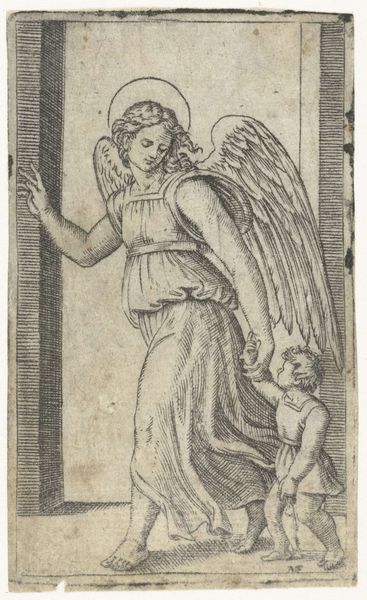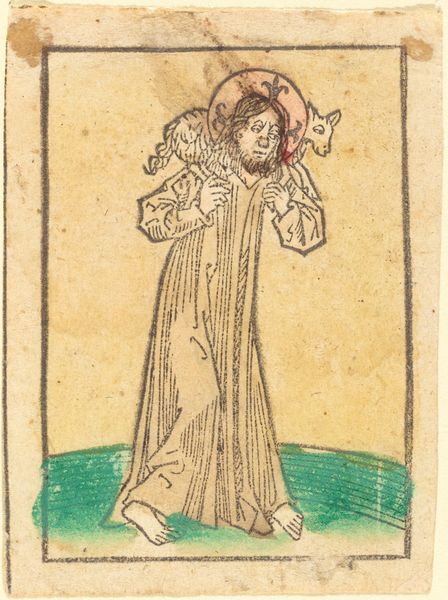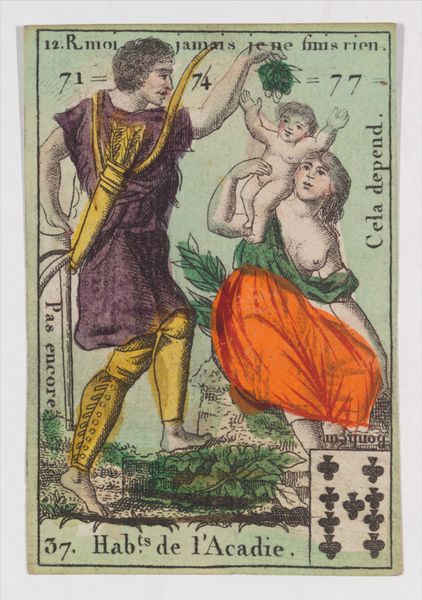
tempera, print, woodcut
#
medieval
#
tempera
# print
#
figuration
#
woodcut
#
history-painting
#
northern-renaissance
Copyright: National Gallery of Art: CC0 1.0
Editor: We're looking at a late 15th-century print, "A Monk with an Angel," a woodcut with tempera. The scene has this striking, almost naive quality. What's fascinating is how the angel, in red, dominates the composition despite attending to the kneeling monk. What do you find most compelling about this work? Curator: What I find striking is the public function of such imagery during the late medieval period. This piece provides insight into the visual culture and devotional practices. Woodcuts like this were relatively inexpensive, meaning that religious imagery became accessible to a broader public. Think of it as an early form of mass media. It serves a didactic purpose and also reinforces established social hierarchies and spiritual beliefs. The vibrant color, hand-applied after the print was made, enhanced its visual impact. Editor: Didactic how? The angel seems almost protective, with that hand on the monk’s head. Curator: Consider how the angel legitimizes the monk’s piety and, by extension, the Church's authority. Such images weren't simply about individual devotion. They were a public performance, subtly shaping social conduct and validating the power structures of the time. How do you see the choice of the artist omitting their signature playing into this? Editor: Hmm, interesting. So, not signing it emphasizes the message over the individual? Making it feel, I guess, more universally true? I never thought about religious art as public performance, just personal belief. Curator: Precisely. The art market then wasn't like it is today, the purpose wasn't individual recognition for artistic merit. It’s a window into a world where art played a direct role in shaping social norms and spiritual understanding. Editor: I'll never look at medieval art the same way again! Seeing it in the context of the public sphere gives it so much more depth. Curator: Indeed, it transforms our appreciation, highlighting art as a critical agent in shaping the historical landscape.
Comments
No comments
Be the first to comment and join the conversation on the ultimate creative platform.

